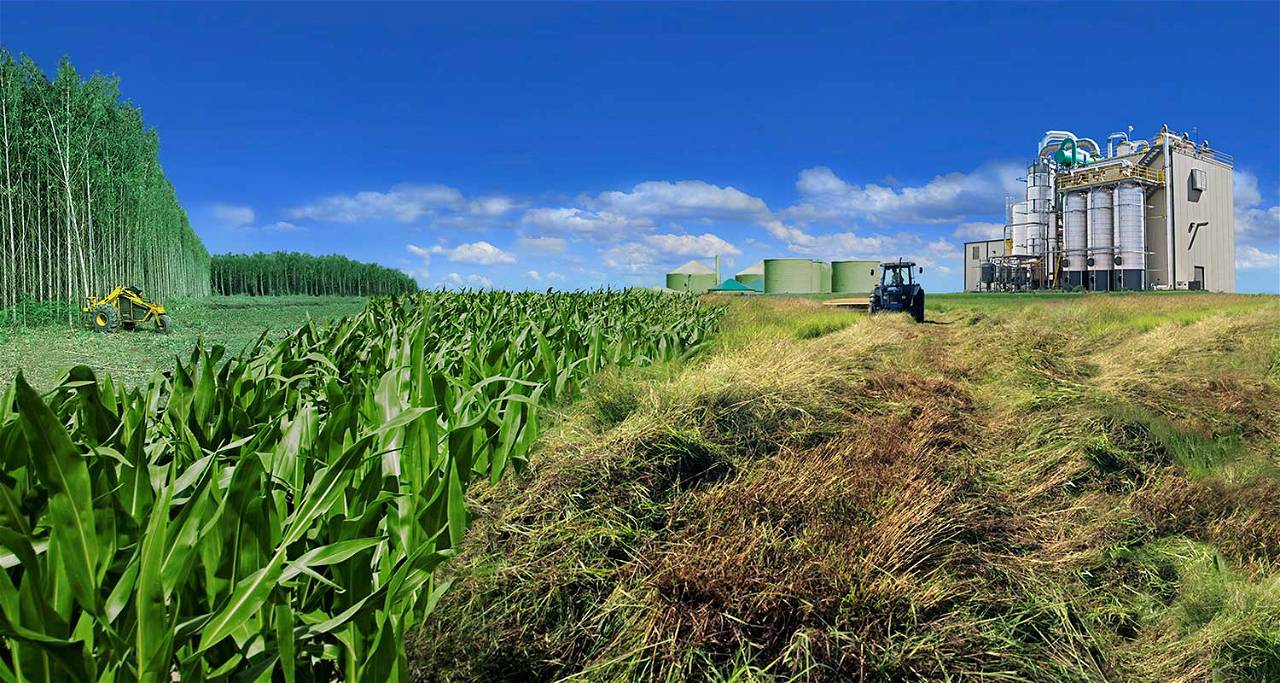
A team of researchers at Oak Ridge National Laboratory's Center for Bioenergy Innovation (CBI) discovered a pathway to encourage lignin formation in plants, which could make processing crops grown for products such as sustainable jet fuels easier and less expensive.
The researchers concentrated on C-lignin, a polymer found in the seed coats of some exotic plants. Lignin, the polymer that gives plants their rigidity, is an excellent source of the building blocks and aromatic chemical compounds required for the production of clean bio-based fuels. However, lignin, particularly the more common G- and S-lignins found in most plants, is difficult to process.
C-lignin has a more linear chemical structure than the other lignins, making it easier to deconstruct. As detailed in Science Advances, scientists working as part of CBI, a U.S. Department of Energy Bioenergy Research Center, have now identified the genetic mechanism at work in the formation of this preferred C-lignin.
The researchers hope to engineer bioenergy crops to produce C-lignin while inhibiting the growth of G/S-lignins, which could lead to more cost-effective, higher-yielding bioprocessing.
G/S lignins form polymer structures that resemble a fishing net with branches and kinks, whereas C-lignin is more like a string, according to Jerry Tuskan, CBI's chief executive officer at ORNL. "You can imagine that pulling apart a fishing net would be more difficult than unravelling a string."
Tuskan stated that the researchers intend to incorporate this polymer into their primary feedstocks of poplar trees and switchgrass in order to make their cell walls easier to break down for conversion into sustainable aviation fuels.
The University of North Texas' BioDiscovery Institute, a CBI partner and project lead institution, has been studying C-lignin for some time, ever since university researcher Fang Cheng discovered the polymer's presence in vanilla bean seed coats in 2011.
"How do you make C-lignin in a plant that doesn't normally make it?" Richard Dixon, Distinguished Research Professor of Biological Sciences at UNT, wondered. "We've taken two approaches to this. One of them is sort of trial and error and guessing—putting it in plants that don't naturally produce it and seeing what happens. The other is attempting to fully comprehend how C-lignin is produced in a plant that does so naturally."
While studying the cleome, or spider plant, Chunliu Zhuo, a postdoctoral scholar at UNT, recently made a new discovery about how plants make C-lignin. For the first 12-14 days after pollination, Cleome produces G-lignin in its seed coats. Then it stops producing anything but C-lignin.
"You'd think that if the cleome is switching from G-lignin to C-lignin, it might make mixed GC-lignin at some point," Dixon said. "No, it doesn't. It's quite remarkable. It simply switches off."
An analysis of C-lignin formation at the molecular level was performed at ORNL by a team led by Tim Tschaplinski in the Biosciences Division.
The scientists discovered that the building blocks for both types of lignin are still present in the plants, but they do not connect to form lignin chains—a process known as polymerization. They float around in the cells but do not bind together to form G/C-lignin.
"The G building blocks completely surprised me. Even later in the development, we discovered that no G-lignin is being produced, but there is still a large amount of the G building blocks present. And they're still being manufactured "Zhuo stated. "That prompted us to investigate how the plant accomplishes this. Why does it only produce C-lignin when there are so many free G building blocks available?"
The researchers expected a complicated process in the plant involving enzymes and multiple steps, but because the switch appears to be so abrupt and complete, they now believe the process is much simpler than they previously thought.
"Because it happens all at once, and C-lignin has recently evolved in many plant species," Dixon explained, "it has to be simple."
"It's not as if plants suddenly evolved C-lignin 100 million or 200 million years ago and now they all have it; it's that some have it and some don't, even among closely related species," Dixon explained. "Chunliu discovered that once the plant produces C building blocks, the conversion of G building blocks into lignin is inhibited."
Goal of Better Biomass Crops
The researchers now believe that C-lignin building blocks inhibit the formation of chains containing G building blocks. Scientists are one step closer to developing crops that are primarily composed of C-lignin now that they have a better understanding of this mechanism. If the process is that simple, engineering it may be easier than they imagined. They would only need to introduce genes that activate C-lignin, rather than turn it on and then inhibit G-lignin, as they had anticipated.
"It brings us closer to engineering plants with C-lignin in the sense that it tells us something we don't need to do—something we don't need to be concerned about," Dixon explained.
"Until now, C-lignin was known as a smaller, minor component of the larger lignin molecules found in plant cell walls," Tuskan explained. "It had never been regarded as a significant enough fraction to be commercially significant. However, by incorporating C-lignin into cell walls, we may be able to reduce the energy required for deconstruction. This work is one of several steps toward establishing an economically viable bio-economy."
(Source: Oak Ridge National Laboratory)
















